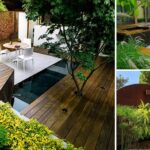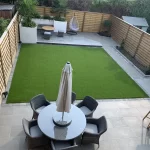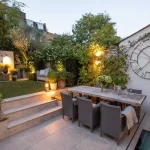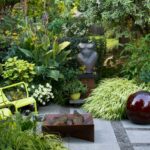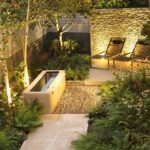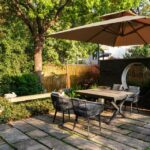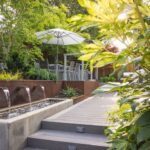Gardening is a beloved pastime for many, but those with limited space may be hesitant to try their hand at creating a beautiful garden. However, with some creative thinking and careful planning, even the smallest of spaces can be transformed into a stunning garden oasis. Small garden design is all about maximizing the space you have available and making the most of every inch.
One key element of successful small garden design is to carefully choose the right plants. Opt for plants that are well-suited to the space you have available – for example, choose compact or dwarf varieties that won’t overpower the garden. Consider plants that offer multi-season interest, such as evergreens or plants with interesting foliage. Vertical gardening is also a great way to add interest and maximize space in a small garden – consider utilizing trellises, hanging baskets, or wall planters to add texture and color.
Another important aspect of small garden design is to create a sense of flow and cohesion within the space. Consider creating defined garden “rooms” or areas within the garden, each with its own purpose or theme. Use pathways, borders, or hedges to create structure and define different areas within the garden. This can help to create a sense of order and organization, making the garden feel larger and more cohesive.
When designing a small garden, it’s important to make the most of vertical space. Utilize walls, fences, or arbors to add height and interest to the garden. Consider adding hanging baskets, wall planters, or trellises to create a vertical garden that will draw the eye upward and create a sense of depth in the space. This can also help to maximize the amount of planting space available, allowing you to grow more plants in a small area.
In small garden design, it’s important to consider the overall layout and composition of the space. Think about the balance of colors, textures, and shapes in the garden, and how they work together to create a harmonious whole. Consider using focal points, such as a sculpture, fountain, or piece of artwork, to draw the eye and create a sense of interest in the garden. Don’t be afraid to experiment with different layouts and planting schemes until you find one that works for your space.
Finally, when designing a small garden, don’t be afraid to think outside the box and get creative. Consider incorporating unique or unexpected elements into the garden, such as a small water feature, a seating area, or a fire pit. These can help to make the garden feel like an extension of your indoor living space and create a welcoming and inviting atmosphere. With some careful planning and a bit of creativity, even the smallest of spaces can be transformed into a beautiful and functional garden oasis.


